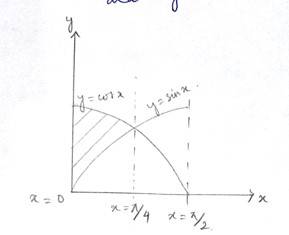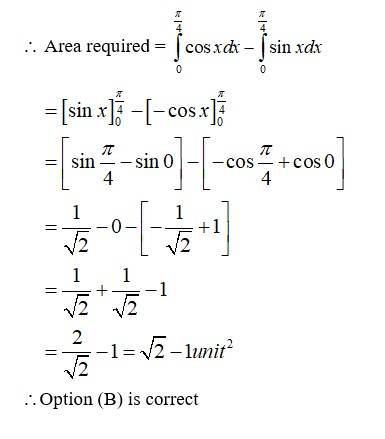39. Choose the correct answer:
The area bounded by the y-axis, y = cos x and y = sin x when 0 ≤ x ≤ π/2.
(A) 2(√2 - 1)
(B) √2 - 1
(C) √2 + 1
(D) √2
39. Choose the correct answer:
The area bounded by the y-axis, y = cos x and y = sin x when 0 ≤ x ≤ π/2.
(A) 2(√2 - 1)
(B) √2 - 1
(C) √2 + 1
(D) √2
-
1 Answer
-
Given curve is
for
And
We know that at i.e,
So the point of intersection is at


Similar Questions for you
differentiating w.r.to x
After solving we get also curve passes through (3, 3) Þ c = -2
which passes through
Since a is a odd natural number then
Þ a = 5
lim (x→∞) (∫? ^ (√x²+1) tan? ¹t dt) / x = lim (x→∞) (tan? ¹ (√x²+1) * (x/√ (x²+1) = lim (x→∞) (tan? ¹ x) * (x/√ (x²+1) = π/2
A = ∫? ² lnx dx = 2ln2 – 1
A' = 4 - 2 (2ln2 – 1) = 6 – 4ln2
Taking an Exam? Selecting a College?
Get authentic answers from experts, students and alumni that you won't find anywhere else
Sign Up on ShikshaOn Shiksha, get access to
- 66k Colleges
- 1.2k Exams
- 680k Reviews
- 1800k Answers
